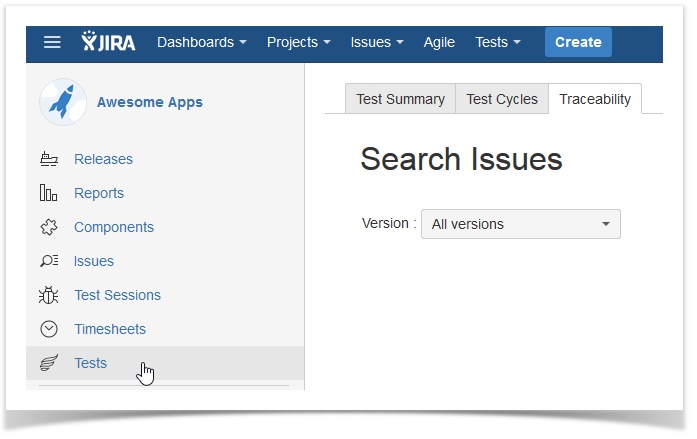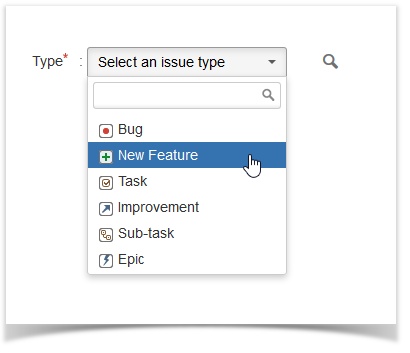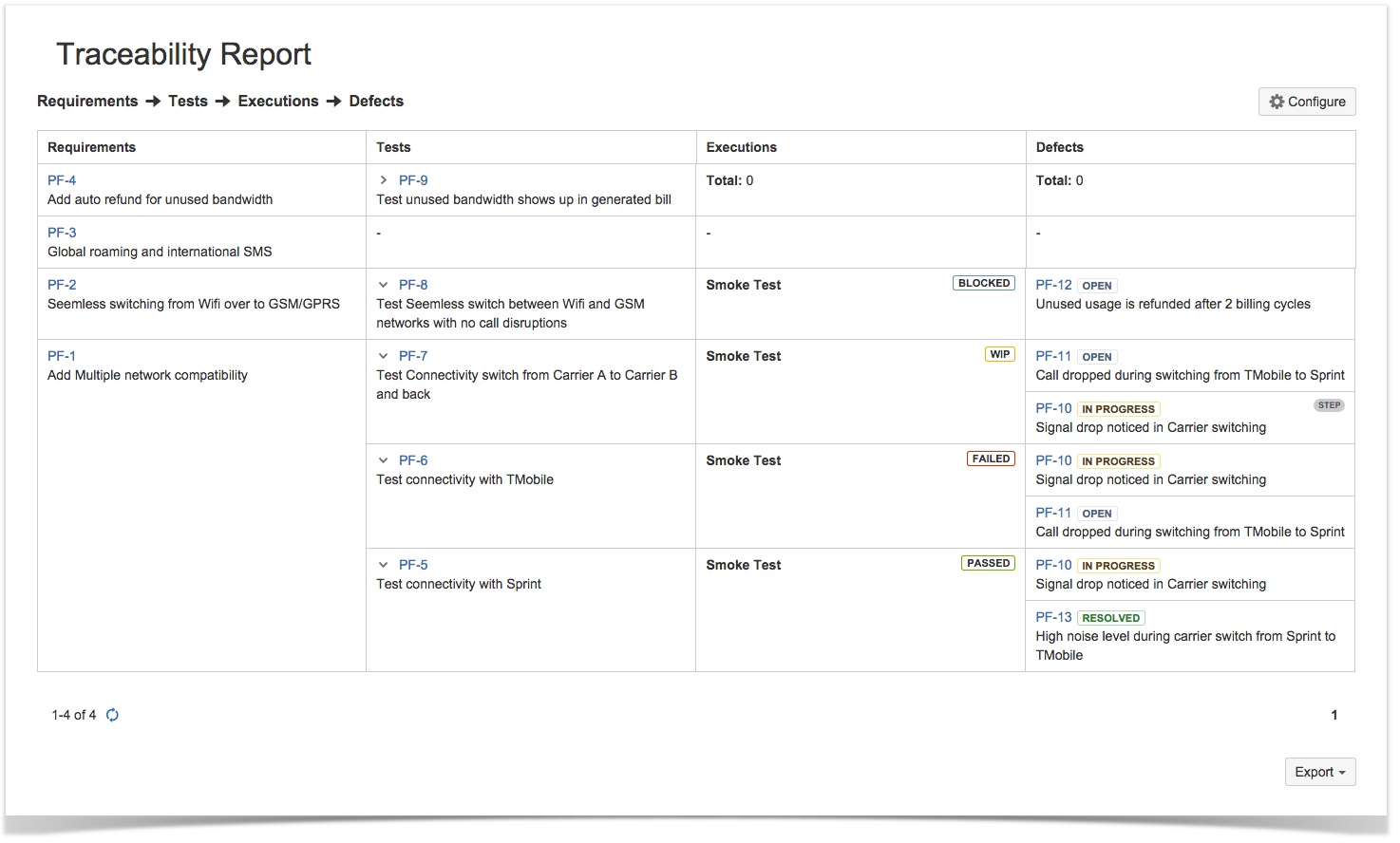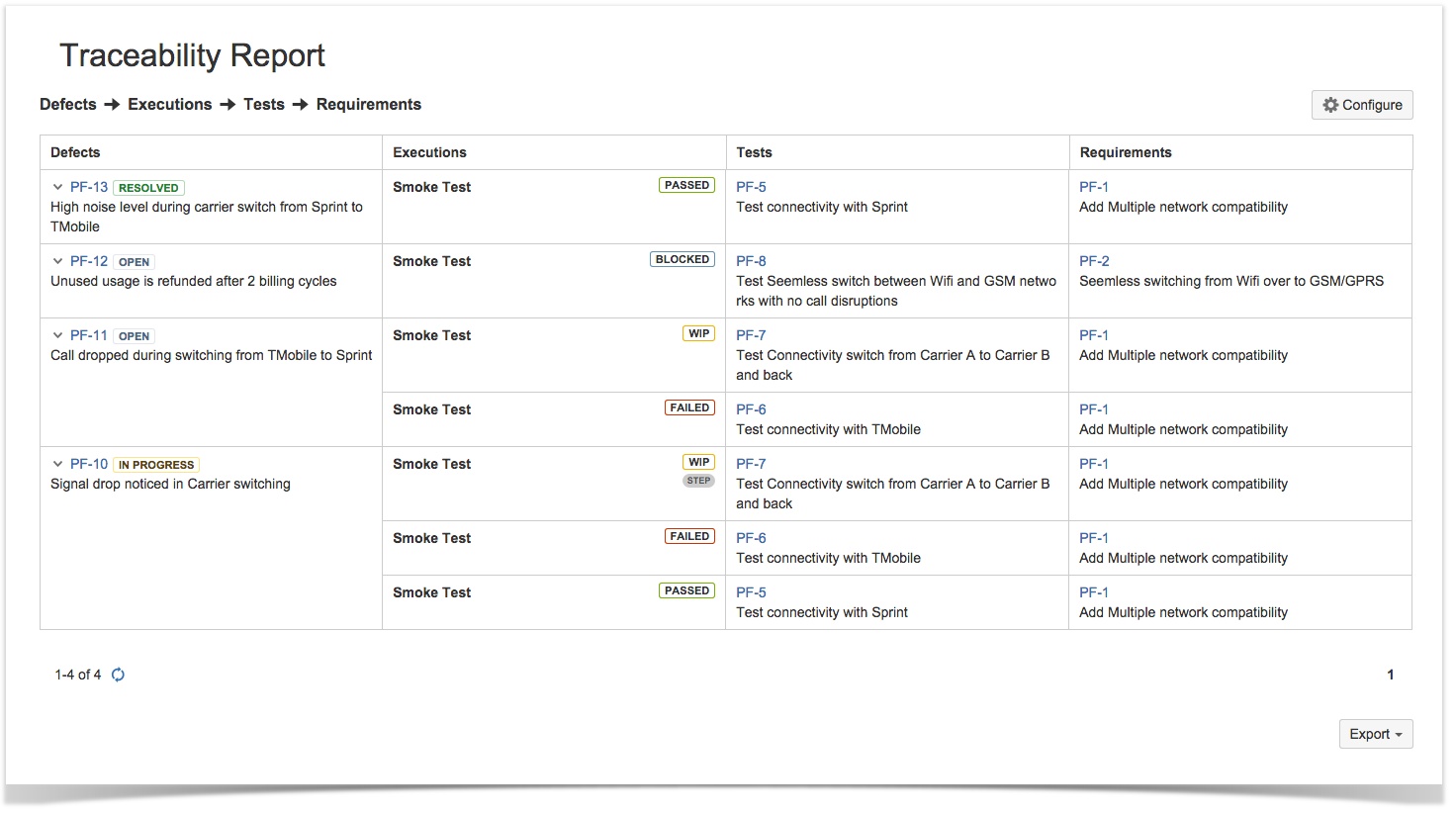Traceability
Zephyr for Jira is now Zephyr Squad! Read more about this. |
Introduction
The ability to trace linkages from requirements all the way to defects or vice versa is particularly useful in a software release cycle. In fact, it can have special meaning at various phases in that release cycle. For example, starting with requirements, knowing how many of them have tests written for them is useful in the early stages to ensure appropriate test coverage. Once the software has been built, keeping track of which test executions have passed for a particular requirement allows the team to make a quality statement about these requirements. And then keeping track of how many open defects exist for requirements help make a Go/No-Go decision regarding the readiness of the software to be shipped.
Traceability reports can also be tremendously useful in producing end-of-release audit reports for compliance and regulatory reasons. They can also be used as customer delivery reports highlighting how every one of their requirements has been met, tested and is defect-free.
Another very important reason to run a Defect to Requirement traceability report is to get a better sense of how many defects are holding up requirements and more importantly, which defect(s) is impacting the most number of requirements – thereby allowing for better bug-fixing prioritization.
Access
Traceability in Zephyr for JIRA can be accessed from the top menu or from the “Tests” menu in the Project sidebar
IMPORTANT
: In order to get useful traceability reports, ensure the following during test creation and execution:
- Your tests are linked to requirements
- Defects that are filed are linked to the test executions in which they were found
Types of Traceability Reports
Requirements to Defects
Select a Version and a particular Issue Type that can be the starting point of your traceability report. That is usually a “New Feature” issue-type or a “Story” or an “Epic”. The resulting list of issues can then be narrowed down to the ones you want a report on. Selecting the “Requirement to Defect” option and clicking on “Generate Traceability Report” will give you a full traceability report from Requirements --> Tests --> Test Executions --> Defects.
This can then be exported as an HTML file or an Excel file for further manipulation.
Useful for:
- Keeping track of progress at various stages of the software release cycle
- Audit and Compliance reports
- Customer Delivery Reports
Here's an example of such a report:
Defects to Requirements
Select a Version and a particular Issue Type that can be the starting point of your traceability report. That is usually a “Bug”. The resulting list of issues can then be narrowed down to the ones you want a report on. Selecting the “Defect to Requirement” option and clicking on “Generate Traceability Report” will you give you a full traceability report from Defects --> Test Executions --> Tests --> Requirements.
This can then be exported as an HTML file or an Excel file for further manipulation.
Useful for:
- Keeping track of how many open defects are impacting requirements
- Prioritizing defect fixing based on which defect(s) is impacting the most number of requirements
- Creating defect-regression test cycles for individual requirements based on number and status of defects
Here's an example of such a report:




Starting Release 8.2, Zephyr Enterprise documentation is moving from its current location on Atlassian to a dedicated, standalone Zephyr Enterprise Documentation page. https://support.smartbear.com/zephyr-enterprise/docs/en/welcome-to-zephyr-enterprise.html